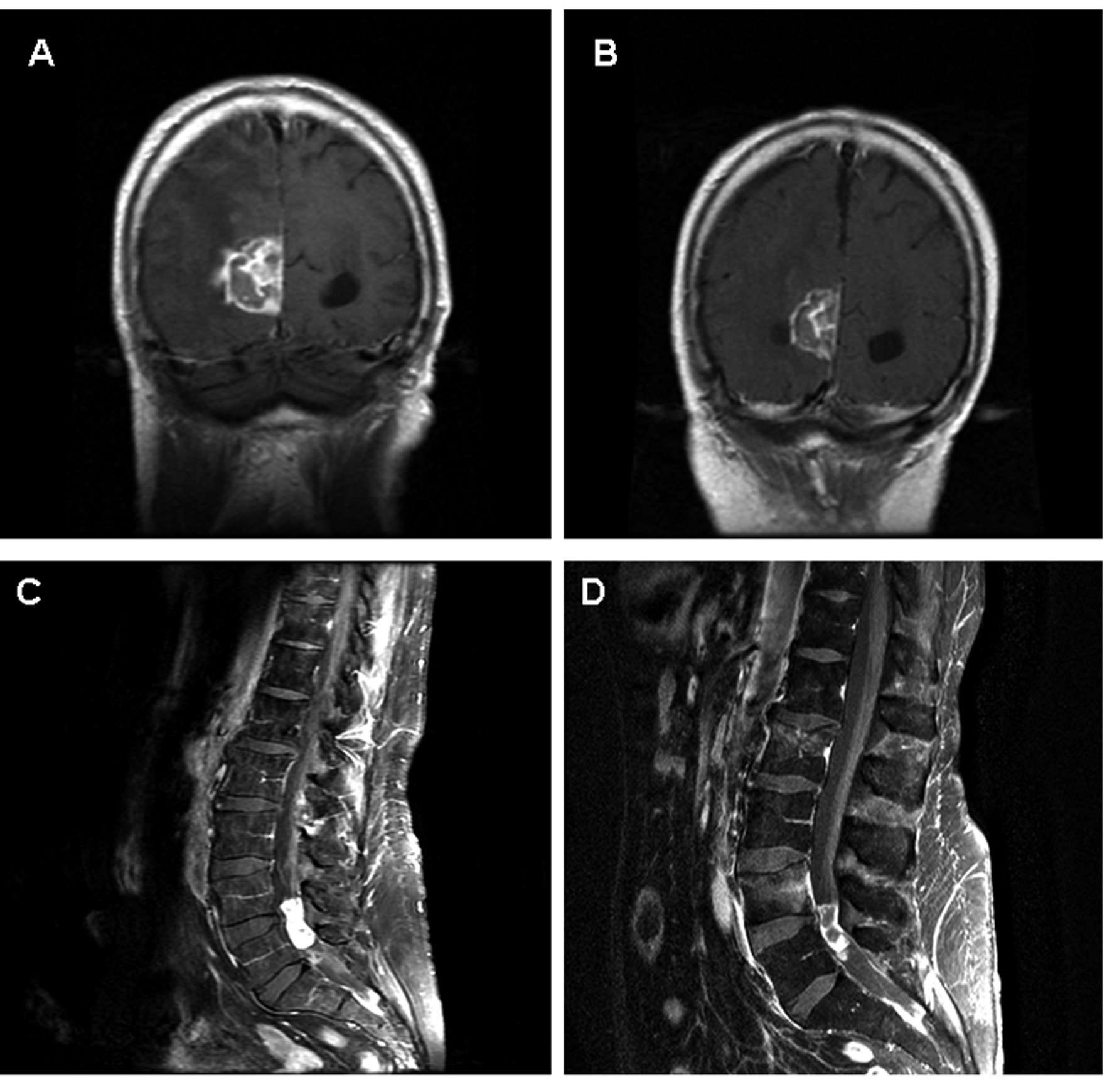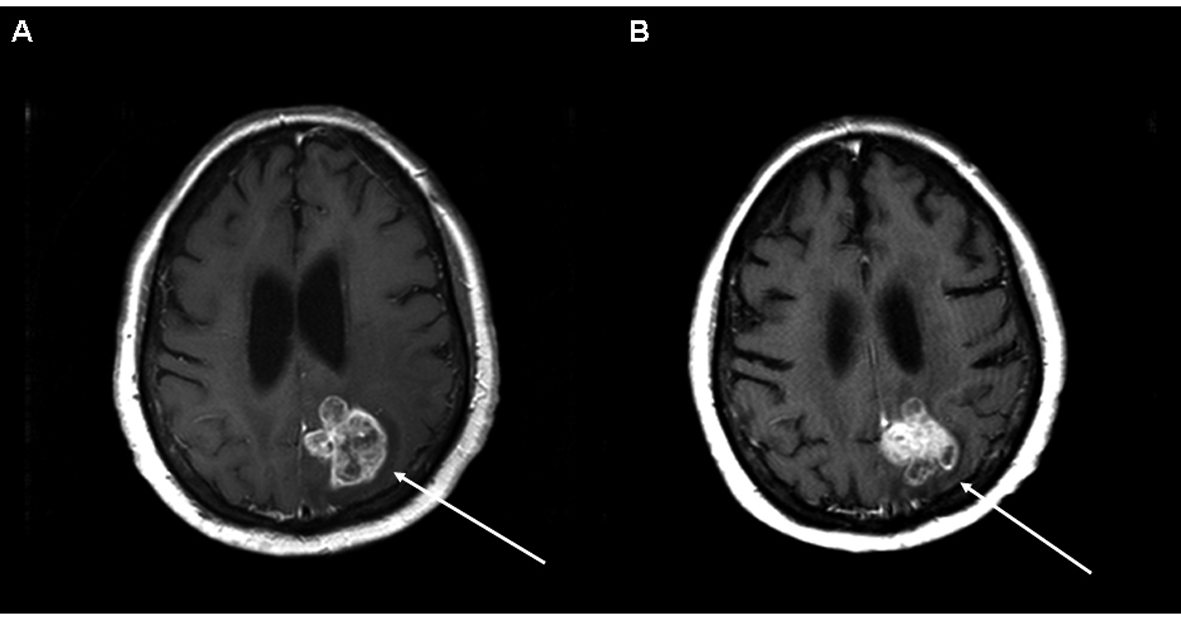
Figure 1. Images A and B represent coronal T1 post contrast MRIs of the brain from patient 2. Image A is prior to initiation of temozolomide/erlotinib. Image B is 8 weeks later demonstrating a substantial decrease in the size of the lesion, but not meeting PR per RECIST criteria. Images C and D represent sagital T1 post contrast MRIs of the lumbar spine from patient 8. Image C is at the time of diagnosis of CSF involvement of NSCLC. Multiple areas of bulky disease were noted throughout the CSF space. Image D demonstrates SD after four months on erlotinib. The area of decreased signal within the tumor may represent necrosis.
